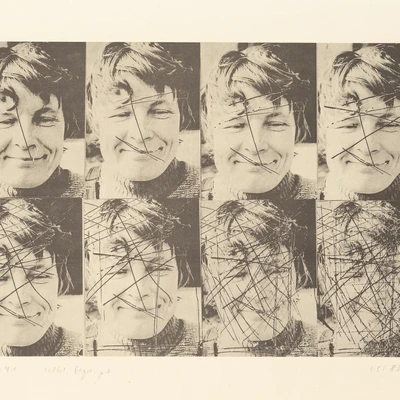Otto Niemeyer-Holstein
- * 1896
- † 1984
Life dates
- Artist
Category
The Quiet Aesthete
“Niemeyer’s talent for colors and their relationship with each other, his sensitivity for tones, his assurance in the composition of the picture and not least of all his skill as a draughtsman have reached a high level of perfection” – thus wrote Hans Jüchser in praise of his artist colleague Otto Niemeyer-Holstein in 1966. At that time, Niemeyer-Holstein was at the high point of his creativity and had found his place in the art world.
Born 11 May 1896 in Kiel, in a worldly family fond of passionate discussions, Niemeyer-Holstein volunteered for military service after his completion of high school. He was wounded in the War and travelled to Switzerland to convalesce in 1916. There, he began to paint and draw intensively. The writer Werner von der Schulenburg introduced him to the artistic circle of Ascona, where he met, among others, Hans Arp, Paul Klee, and Alexej Jawlensky. He later described these encounters as “determining his fate.” Niemeyer-Holstein travelled often to the South – to Italy and southern France, but also time and again to his homeland Schleswig-Holstein. The North, and landscapes on the sea, were to remain among the most frequently recurring subjects of his painting, together with self-portraits and nudes. It was in the 1920s that Otto Niemeyer-Holstein found his own mature style. In contrast to many protagonists of Neue Sachlichkeit (New Objectivity), Niemeyer-Holstein always emphasized the painterly as opposed to the draughtsmanly element in his pictures. “The objects portrayed, owing to the shallow perspective in which they are drawn, the delicate, almost redolent colors in which they are painted, have an immaterial and highly poetic effect,” wrote art historian Ulrike Görner in 1974 with reference to Niemeyer’s pictures of that era, which had recently been exhibited in Berlin and internationally.
The Machtübernahme of the National Socialists in 1933 changed the artist’s life. His pictures were defamed as “degenerate” and Niemeyer-Holstein retreated from the public eye. He lived and worked – at first as a provisional measure, but then enduringly – between Koserow and Zempin on the island of Usedom, in part in an abandoned S-Bahn train car, which he later re-modelled and dubbed “Lüttenort”. He also undertook numerous voyages to Scandinavia with his sailboat.
Niemeyer-Holstein sought public exposure again only after the end of the Second World War. His pictures now evoked more strongly the tradition of French Impressionism, and revealed a very subjective interiority, which earned him the respect of both artist colleagues and a broader public. The “Capt’n,” as he was affectionately called, continued to undertake frequent voyages, including one in 1960, with a motorized freight ship, through the Mediterranean, the Suez Canal, the Indian Ocean, and all the way to China. His favorite subjects remained everyday objects, the close circle of his family and friends, portraits, and Baltic Sea landscapes, especially in the Winter, when few tourists were to be seen. This is evident in works such as Lotsendampfer im Chinesischen Meer (Pilot Steamer in the Sea of China, from 1960), Im Garten Lüttenort (In the Garden of Lüttenort, from 1978), Schneeverwehung vor dem Tabu (Snowdrift in front of the Tabu, from 1979) and the Selbst-Porträt (Self Portrait) from 1976. Otto Niemeyer-Holstein was greatly admired for his integrity – he refused, for instance, to sanction repression of the Prague Spring in 1968 – and for his sensitive artistry, which made him, in the words of sculptor Fritz Cremer, “one of the few enduring and vibrant bonds to a tradition that carries forth the true values of painting into our era.”
Otto Niemeyer-Holstein died on 20 February 1984 in Koserow. In his will, he provided that his atelier Lüttenort should remain unaltered. Today it is a popular museum on the island of Usedom.
text: Matthias Zwarg, translation: Darrell Wilkins
Works by Otto Niemeyer-Holstein
Travelling exhibition
Publik machen: 40 Künstler:innen aus dem Bestand des Zentrums für Kunstausstellungen der DDR
Popular keywords
Many more works are hidden behind these terms
